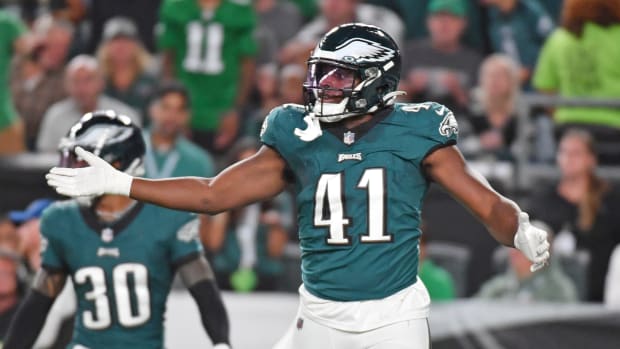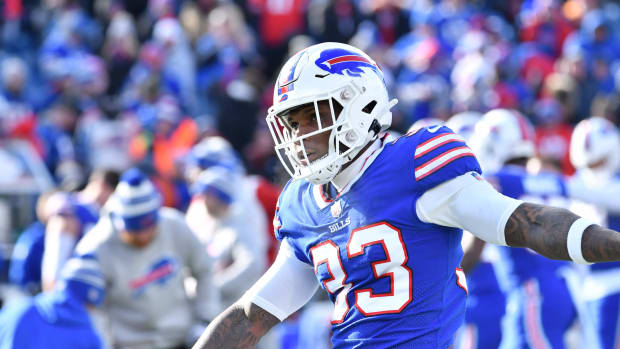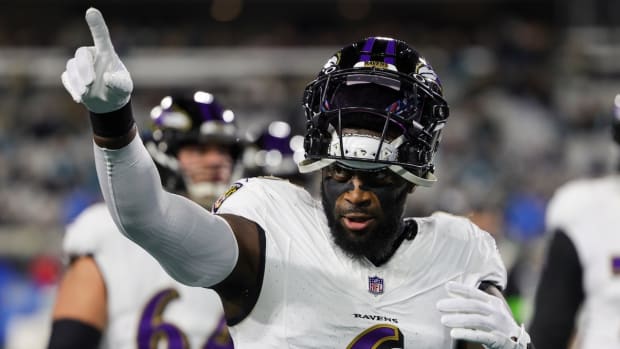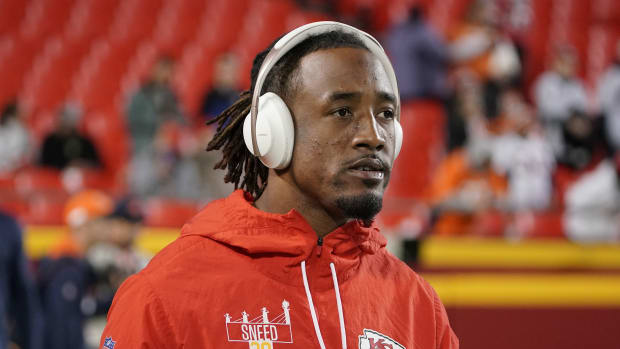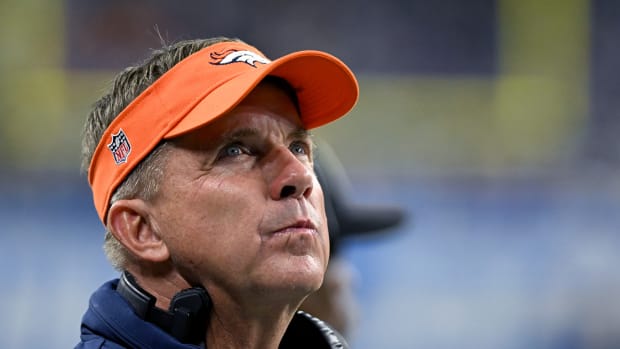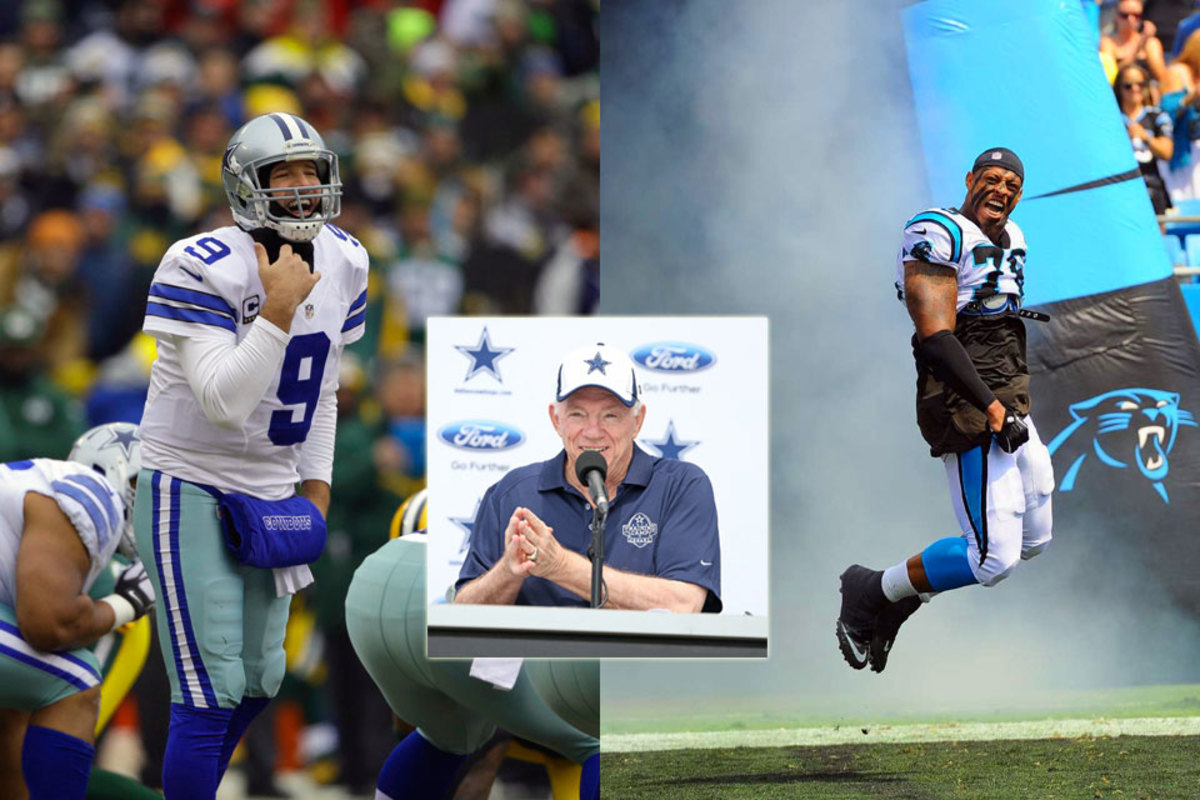
The Dallas Cowboys Have Done It Again
In recent times, there appeared to be a new Big D in Dallas: discipline, as in self-control. Despite owner Jerry Jones’s customary bravado, the Cowboys had been making sound business moves. The team had 1) resisted the temptation to select Johnny Manziel, 2) negotiated team-friendly contracts for ascending young players Tyron Smith and Sean Lee, 3) applied the “pay as you go” approach to the talented-yet-mercurial Dez Bryant, via the franchise tag and 4) did not waver from their established price for DeMarco Murray despite a challenge from the team’s biggest rival. By all appearances we were seeing a new and improved business mode. However, a few recent moves indicate that the team has reverted to its “throw caution to the wind” ways of old.
Lone Suitor
With rationalizations about “second chances,” the Cowboys signed defensive end Greg Hardy as he faces pending NFL discipline regarding a disturbing domestic violence incident. Although team management gushed about 1) the contrition Hardy showed (what other attitude would he have?) and 2) the team-friendly nature of the contract—the vast majority of the money is “earnable” rather than guaranteed—the move is a questionable one for this time and place in the league.
Hardy, a premier pass rusher, found a lukewarm market due to his status; the Cowboys may have been negotiating against themselves. The reason for the lack of interest was not necessarily the pending discipline from the league; teams could have protected themselves contractually just as the Cowboys did. Rather, other teams were not willing to invest in a player with this incident in his recent past, no matter his talent level. Yes, the Cowboys have a low-risk contract, but sometimes—and I have been a victim of this in negotiations—team executives fall in love with the contract more than the player.
Teams have to stand for something. Signing Greg Hardy is the type of move that many teams would simply not make, no matter the contract. The Cowboys, enticed by the talent and the lack of financial commitment, did so at the expense of standing for something different.
Romo Redux
One of the hardest things for teams to do is resist the great temptation to restructure the contracts of franchise quarterbacks. I know: In managing the Packers’ salary cap for nine years, I faced the annual temptation of restructuring Brett Favre’s multimillion-dollar salary to create short-term cap space. I had studied the past and learned of the huge cap holes left behind from previous separations with franchise quarterbacks such as John Elway, Troy Aikman, Joe Montana, Steve McNair, etc. So I resisted, leaving behind a cap charge of less than $1 million when Favre was traded. Enough back patting for me, on to the Cowboys and Tony Romo.
Draft Problems, Solutuions
NFL film maven Andy Benoit and college football expert Andy Staples combine their knowledge to peg which prospects fit best with which teams. AFC East | NFC EastAFC North | NFC NorthAFC South | NFC SouthAFC West | NFC West (4.21)
Romo’s 2013 contract extension, with a $25 million bonus prorated over the life of the deal, was negotiated knowing there would be future cap consequences. At that time, we could only hope that the Cowboys would not revisit it for several years, allowing the future stacked proration to settle down as the contract went.
So much for that.
Less than a year after signing that deal, the Cowboys converted $12.5 million of Romo’s 2014 salary into a prorated signing bonus to push out future cap charges. Now, a year after that restructure, the Cowboys have done it again, converting $16 million of Romo’s 2015 salary into another prorated signing bonus, adding another $12.8 million to the already stacked amounts of proration in the coming years. Romo now carries the highest amount of potential dead money—cap charges that will remain if Romo and the Cowboys part ways—of any player in NFL history. Though the possibility is remote, the amount of dead money acceleration would be $46 million if the Cowboys and Romo were to somehow part this year. That amount reduces to $32 million next year and $19.6 million in 2017, making Romo, for all intents and purposes, uncuttable and untradeable until then.
As with the Hardy signing, there are plenty of rationalizations to make about this latest credit card spending move—the cap is rising, Romo is in his prime, etc.—but other teams have managed to resist similar temptations with their franchise quarterbacks. The Cowboys appeared on that track until last week.
Speaking of Romo and his contract…
Pay cut or pay rearrange?
Romo made some interesting comments regarding DeMarco Murray’s free-agent defection to Philadelphia, recounting that Murray suggested, perhaps in jest, that Romo take a pay cut to help sign Murray. (Romo says he would have.) While this is a nice story, I do not believe it; I would have advised Romo against it if I were his agent, and I would have never pursued it if I were Cowboys.
As readers of this space know, there is a difference between “creating cap room” and taking a pay cut. Romo did the former, as he has done before, and certainly would have done that to help sign Murray. There are no negative consequences for the player to provide a simple cap restructure. Indeed, they can provide better payment terms and even increase the likelihood of another contract negotiation with bloated cap numbers ahead (see Fitzgerald, Larry). I have yet to see a player decline a team’s request for this paper transaction.
The Lure of Peterson
More temptation for the Cowboys? Peter King says Dallas, Arizona and Jacksonville are possible landing spots for Adrian Peterson if he leaves Minnesota—but no team should be jumping at the chance. FULL STORY
A pay reduction is a different story, usually done to players without leverage. Further, a pay cut to help out another player is a dangerous proposition from everyone’s standpoint. I suppose there is a chance that all will go swimmingly, but that is unlikely. What if, for example, Romo made this sacrifice and Murray and/or the team had a down year or Murray and/or Romo got hurt or Dez Bryant wondered why Romo would sacrifice money for Murray but not for him. Somewhere along the way there would be some second-guessing and perhaps hurt feelings. And the ultimate blame would lie with management for allowing it to happen.
When the Packers considered acquiring Randy Moss in 2007, Favre offered to give up some of his salary to help acquire the talented wideout, who wanted a one-year deal that we balked at and who ending up signing with the Patriots. I told Favre we appreciated the offer but it was a nonstarter. The last thing I wanted to do was to implement a pay cut for our most important player and have that tied to an incoming player. Beyond the dangerous precedent and predictable questions from agents of existing players on the team, I wondered what would happen between Brett and Randy if things went south, knowing financial sacrifices had been made. I politely told Brett that we would not be considering his offer.
• KING: Meet the mystery man who’s been pulling strings at the NFL for four decades
Players around the NFL take pay cuts all the time, but that is due to the team leveraging those reductions, not the player making a voluntary sacrifice. If teams need to take out mortgages on player contracts with cap refinancing, that is one thing. Cash withdrawals for star players like Romo or Favre, however, can be hazardous to a team’s health beyond the financial ledger.
The Cowboys were showing so much promise with sound decision-making and fiscally responsible contract management. Perhaps they will return to that prudent style again, but these moves recall an undisciplined past management style ruled by emotion and impulse.
Andrew Brandt will be hosting a sports law symposium at Villanova University on Friday. Click here for details.
Follow The MMQB on Facebook, Twitter and Instagram.
[widget widget_name="SI Newsletter Widget”]



































